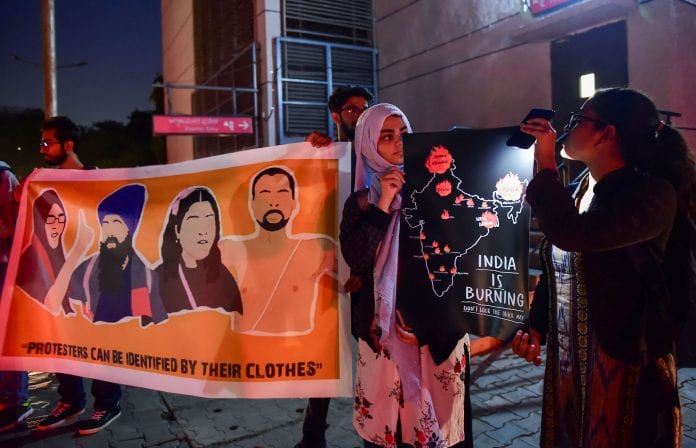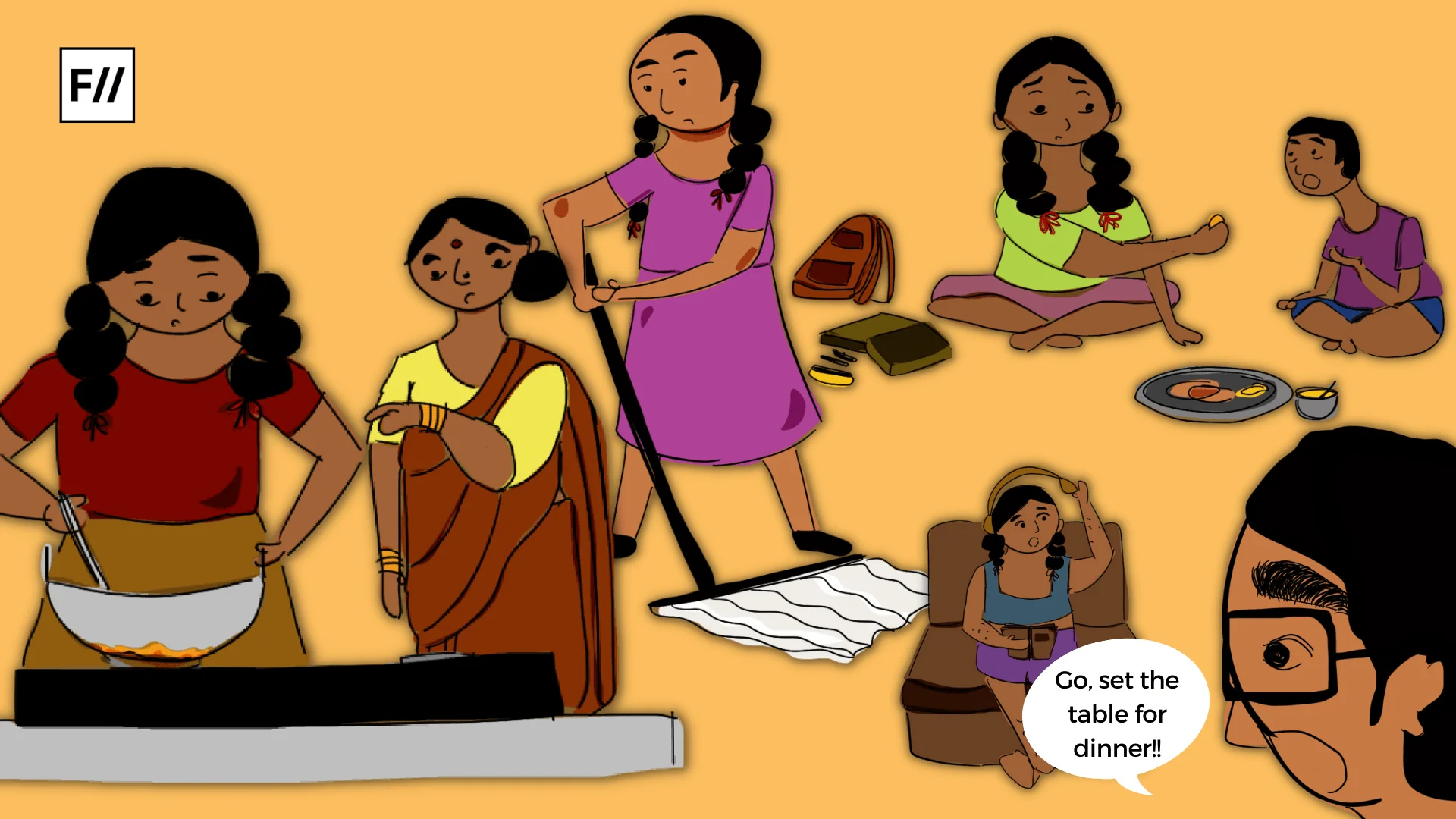Our honourable Prime Minister implied in his speech back in December, “Those creating violence can be identified by their clothes,” and every uncle in the country nodded their head. It seems like the lectures our elders have given since we were young and immature, which we still are in their eyes, have not yet been accepted and has been subsequently applied by them – don’t judge a book it’s cover.
Soon after this statement, a college student from Kolkata, Indulekha, dressed up in a hijab holding up a placard that challenged the Prime Minister to identify her. It is funny how one hijab adds the anti to the national.
It should be noted that this is a much larger issue; actually the identification and analysis of one’s entire existence happens at a glance. The kurti that you got from Sarojini Nagar or the slogan tee you picked up off the rack from H&M will end up having a larger impact on how people decide their engagement with you. The “Feminist” t-shirt will either get no boys approaching you for dates or some boys ask you, “I also believe in equality, but I don’t understand you feminist types!”
If I were to wear my black kurti with a stole around my neck and simple black bindi on my forehead and walk with a group of my friends around Jantar Mantar, I’ll be scared that people might call the police. The issue ranges from the character assassination of every girl in a crop top to the dehumanisation of rape victims to you thinking your neighbourhood aunty isn’t well educated or ambitious just because she chooses to dress in a basic cotton suit everyday.
Interestingly, researcher John T. Malloy, author of the book, ‘Dress for Success’ attempted to explore the biases we form in everyday life. When the researcher dressed in a suit asking for money from random strangers at the station to get back home, he collected 7.23 dollars. By wearing the same suit and just adding a tie, he managed to collect 26 dollars. Our clothes translate our class to those around and these distinct signs form their biases against or for us. It’s almost amusing how we would give money to someone who wears a suit and a tie and not someone with torn and worn out clothes because somehow the former deserves help more than the latter.
Our clothes translate our class to those around and these distinct signs form their biases against or for us. It’s almost amusing how we would give money to someone who wears a suit and a tie and not someone with torn and worn out clothes because somehow the former deserves help more than the latter.
In a study conducted in 2009, Swiss undergraduates were shown photos of candidates competing in the 2002 French elections. The students were further asked to choose the most competent candidate. As many as 70% of the students that were a part of this study, chose the candidate who then went on to win the election. Their choice was completely based on the candidate’s looks shown in the photographs. This actually elucidates the point that how many other citizens who weren’t part of the aforementioned study probably did the same and let their decision be swayed merely by what they saw, or which is just what was shown to them.
It may be news to some that many politicians hire professional stylists to make sure they appear approachable and trustworthy to the voters. The colour white is worn most extensively because it symbolises purity and pristineness. You are most likely to think of someone wearing a black kurta as a goon and of someone wearing a kurta as a person full of wisdom and clean intentions.
Also read: Patriarchy And The Politics Behind Policing Women’s Clothes
If the female ministers were to wear even suits, let alone pantsuits, instead of saris in their rallies or in Parliamentary discussions, they’re inadvertently losing out on their vote bank which is so absurd but unsurprisingly very true. The American candidates always choose colours that fall within the spectrum of blue, white and red which are the colours of the American flag as a symbol of their apparent dedication to their country. The colour saffron is worn by many candidates to show their unwavering support to Hindutva and to scream the ideas which they may not be able to explicitly state.
People have, however, managed to use this tendency to their advantage. Taking up the instance of the hijab again, Muslim women have replied to the Islamophobia and the comments on the culture of wearing hijabs by incorporating it into their identity. The hijabis now hold the hijab as a fundamental part of who they are and reiterate their choice of wearing it by emphasising how proud they are to wear it.
It becomes important to point out here that it is not just about what you wear – like using clothes to express your gender or non-conformity to gender altogether. For instance, the Pride Marches that happen, seem like a liberating safe-space to wear whatever you want regardless of whether it holds up to the norms delegated to one’s gender. But it’s also about what you don’t wear. The #freethenipple movement on Instagram features girls voicing the need to put a stop on reducing women’s bodies to mere sex objects for the male gaze. The need to dress a certain way and cover up certain parts of your body is the first thing young girls have to think about every time they go outside. The movement addresses the hassle that women have to endure wearing bras for hours on end.
People have however, managed to use this tendency to their advantage. Taking up the instance of the hijab again, Muslim women have replied to Islamophobia and the comments on the culture of wearing hijabs by incorporating it into their identity. The hijabis now hold the hijab as a fundamental part of who they are and reiterate their choice of wearing it by emphasising how proud they are to wear it. It doesn’t come with its own troubles and constant passing of comments reeking of prejudice but wearing a symbol of your identity with no qualms is a much more explicit display of bravery than it would seem, it today’s times and especially in the current scenario.
So where do you draw the line?
Yesterday it was your hijab and turban, today it is your slogan tee and your bra strap, tomorrow it could literally be if the rubber band you use to tie your hair is saffron or not. If your clothes decide if you create violence or not, maybe the government should send out an official list that tells me which t-shirt of mine makes me look like a protester.
Also read: The Latest In Government ID: Your Clothes
As I write this article, I speak from a privilege – from the comfort of my house with a nameplate that boasts of an upper caste Hindu surname, in my room in front of my closet that holds at least a couple hundred pairs of clothing. I could still push some limitations despite of being the second sex but it will continue to amuse me how I have to think more about the political connotations of my outfit than what highlights my extra fat. Well the good news is, even if the country is in shambles, everyone still looks pretty and perfectly put together.
Akshita is a Sociology major who likes dressing up. She can be found either marvelling at a book or a movie, or typing metaphors in her Notes app and calling it a poem. You can find her on Twitter and Instagram.
Featured Image Source: The Federal





No sex please, we are Bhariya naries. I urge you all not to lose your values by aping the western women. They are not only cheap or highly immoral but also very. very ignorant.